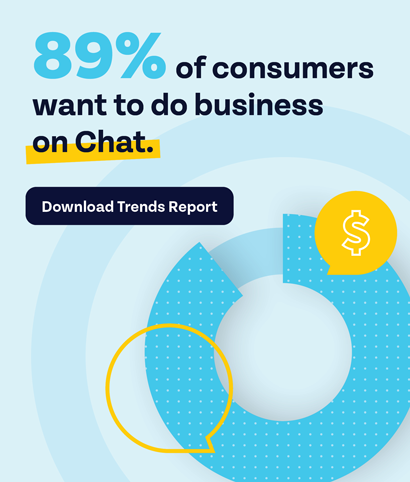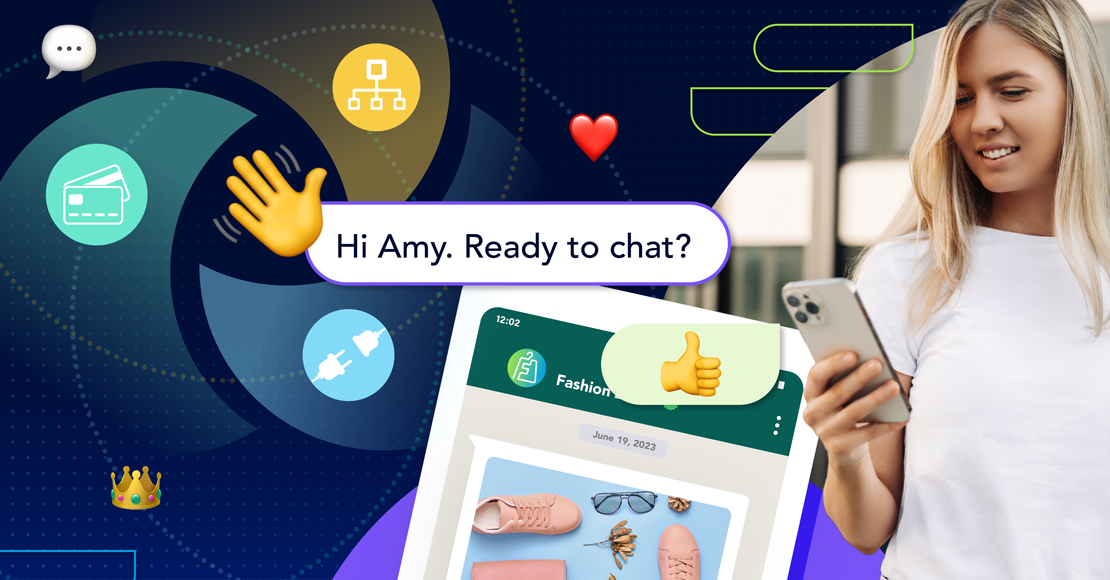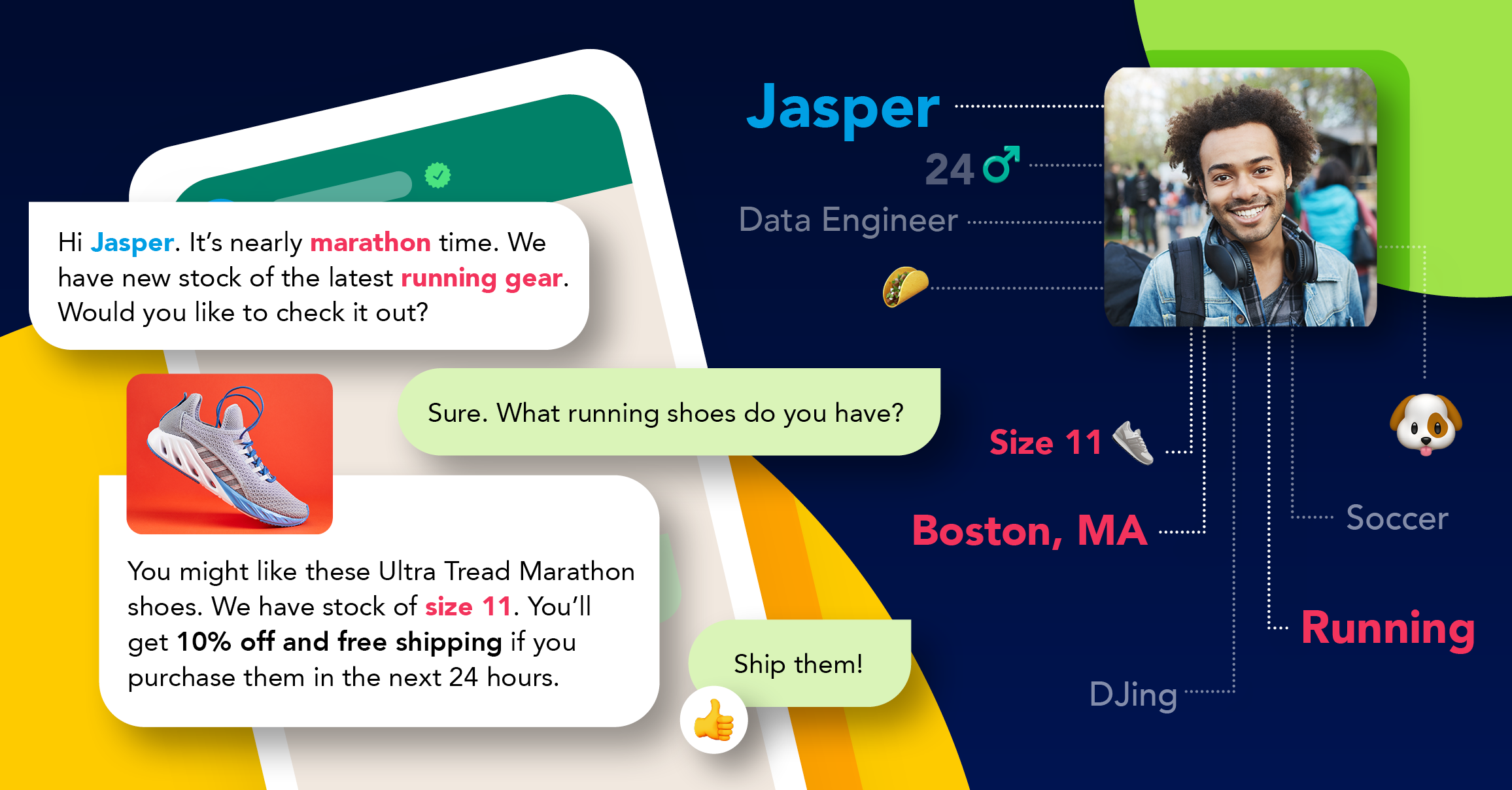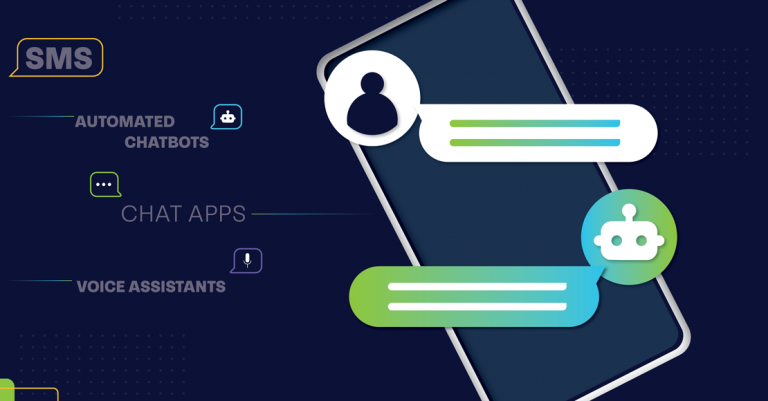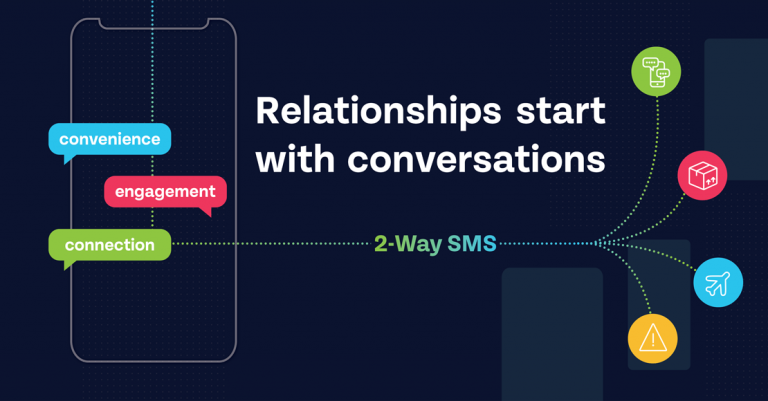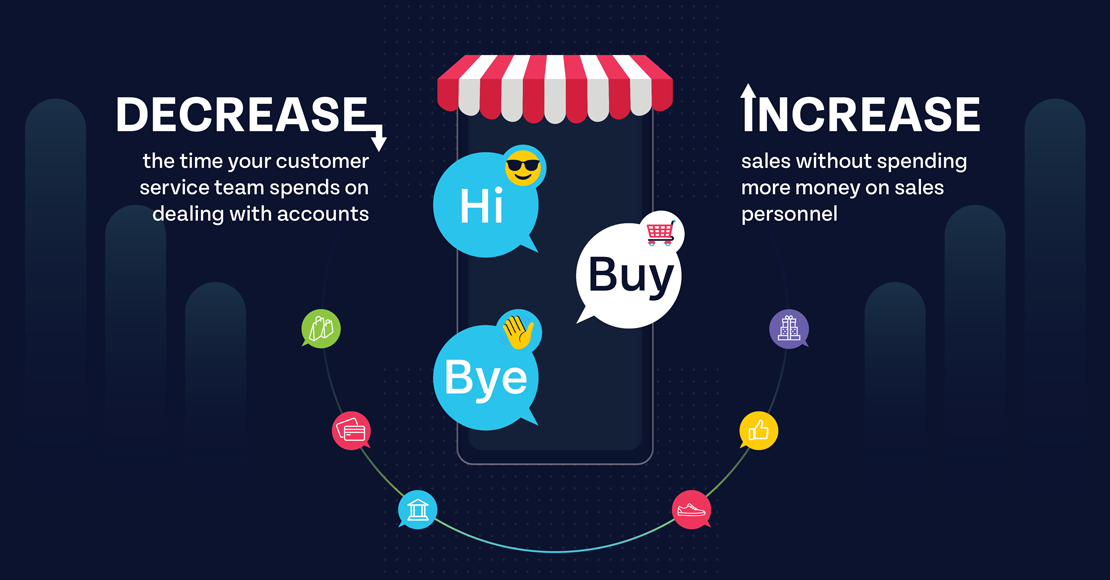
Conversational commerce—the intersection of messaging apps and commerce—drives conversions and improves customer satisfaction. Consumers can chat with company representatives, get customer support, ask questions, get personalized recommendations, read reviews, and click to purchase all from within messaging apps. With conversational commerce, the consumer engages in this interaction with a human representative, a chatbot, or a mix of both.
The growing smartphone adoption rate makes conversational commerce incredibly effective. As of 2020, more than 72% of American adults owned smartphones. Globally, about 46% of the world’s adults had smartphones in 2020, up over 8% since 2018. There’s still plenty of room to grow, though. And as the number of people using smartphone apps increases, conversational commerce and chat commerce (making purchases over chat) will grow along with it.
Chatbots can be a key part of a smart conversational commerce strategy, taking on simple, repeat tasks such as placing orders and answering basic questions. This frees up your human customer service agents for more complicated interactions that need a human in the loop. Chatbots can also initiate interactions to get the conversation started. For example, when someone visits your Facebook page, your chatbot can immediately ask them what services they need.
Below are key tips to creating a successful conversational commerce plan:
Use the power of your brand voice
Part of what makes conversational commerce so powerful is right in the name itself: it’s a conversation. The voice your brand brings to the conversation is critical—and it needs to stay consistent. Whether you’re using a chatbot, human agents, or both, it’s important that all interactions with your brand have the same voice and deliver similar messages. If not, the experience will feel disjointed. You’ll lose the personal and intimate benefits of connecting with customers in social and chat channels in the first place.
Let’s look at a couple of examples to see how brand voices differ—and how it translates to the information and messages you convey.
Imagine you run a restaurant that specializes in Mexican-Asian fusion. You sell tacos stuffed with tofu, kimchi, pickled vegetables, and other Asian ingredients. You also have sushi options that include avocado, hot sauce, and ingredients common in Mexico. Your brand is high-energy and fun, bright colors and a festive feel await diners in your restaurant.
When someone visits your website, the chatbot might ask questions like:
Do you want to reserve our restaurant for a fun event?
Want to check out our latest menu of hot-off-the grill specials?
Check out our Happiest Happy Hour specials!
When someone clicks on one of those options, the chatbot gives them the correct answer or directs them to the appropriate resource.
A chatbot’s questions would look very different for an investment company known for its conservative approach to growing wealth. The voice your chatbot and agents would use would be straightforward and honest, using simple, direct language to inspire trust. In addition, the content of your conversations with customers would be completely different.
With this business, conversation starters might sound more like:
Do you need to rollover your 401(k)?
Would you like to schedule a meeting with an advisor?
Talk to an expert about lowering your tax burden.
Are you wanting to create an account?
Know Where Your Customers Are
Different chat apps attract different demographics. Finding out exactly which channels your various customer segments use is key.
Roughly 69% of Americans use Facebook, so adding a chatbot to your Facebook business page is a solid option. WhatsApp is the most popular global messaging channel, with more than two billion active users each month using it to communicate with family and friends. WhatsApp is also the most popular message app for all age groups.
Seventy-one percent of U.S. adults between ages 18 and 29 say they use Instagram. But only 13% of people 65 and over do. If your business targets a young audience, reaching them through Instagram can be a smart investment. If you have an older audience, it likely is not.
Other places that you can reach your customers include:
WhatsApp
Facebook Messenger
Snapchat
Your website
Set Realistic Goals for Your Conversational Commerce Plan
When you start your conversational commerce plan, start small and build upon your successes. By choosing simple tasks that a large percentage of your customers do over and over, you get lots of learnings quickly. You’ll see what’s working and where you might want to make tweaks. For instance, maybe your customers use the word “bal” instead of “balance” or behave differently when doing a task in WhatsApp than they do when doing the exact same task on another chat channel.
Conversational commerce tends to do two things very well:
Lowers the amount of time that customer service reps spend dealing with accounts
Increases sales without increasing the amount of money you spend on sales personnel
During the first month of your plan, set goals like:
Decreasing the customer service department queries by 10%
Increasing online orders by 5%
There’s a good chance that you will do better than that, but you need to establish a baseline before you commit to concrete numbers. Measuring against your KPIs shows you how each iteration improves upon the last—or if for some reason it doesn’t. You’ll see if there are any broad-stroke takeaways. You can also begin to optimize your interactions within each channel to take advantage of unique features and functionality.
From simple, basic everyday queries to more complicated tasks like acquiring and onboarding new customers, you can use what you’ve learned firsthand from your own customers to offer more capabilities with confidence.
Partner with a Proven Leader
You will likely get the most benefits from conversational commerce when you work with a company that can help you navigate the nuances of this new paradigm—and quickly start to see proof of concept with solid results.
As a global messaging leader, Clickatell helps you maximize your outreach and track performance. We are experienced at integrating SMS into CRMs and other software. And, the Clickatell WhatsApp Business API enables you to take advantage of the channel’s chat capabilities—and tap into the 75% greater year-over-year (YoY) growth in annual revenue (10.7% vs. 6.1%) experienced by companies that do.
What’s more, our focus on chat commerce enables your customers to not just engage with you for information and support, but actually securely buy your product or service via chat channels. With it you can:
Manage profiles.
Retrieve statements.
Manage subscriptions.
Redeem gift cards.
Pay for online purchases.
Manage digital products.
Our team of skilled professionals will work with you to design a plan that meets your needs—and exceeds your expectations. Curious to know more? Let’s chat.
Explore other articles
Step into the future of business messaging.
SMS and two-way channels, automation, call center integration, payments - do it all with Clickatell's Chat Commerce platform.
